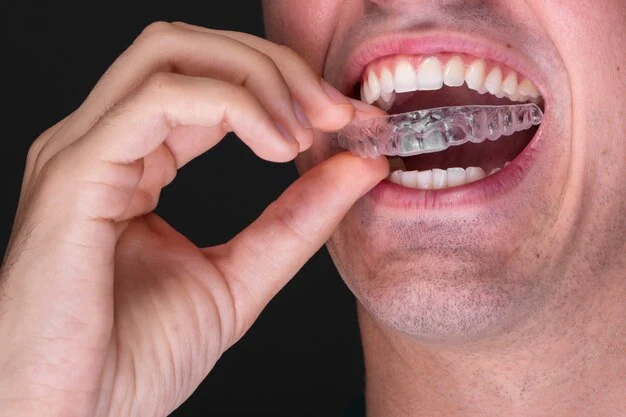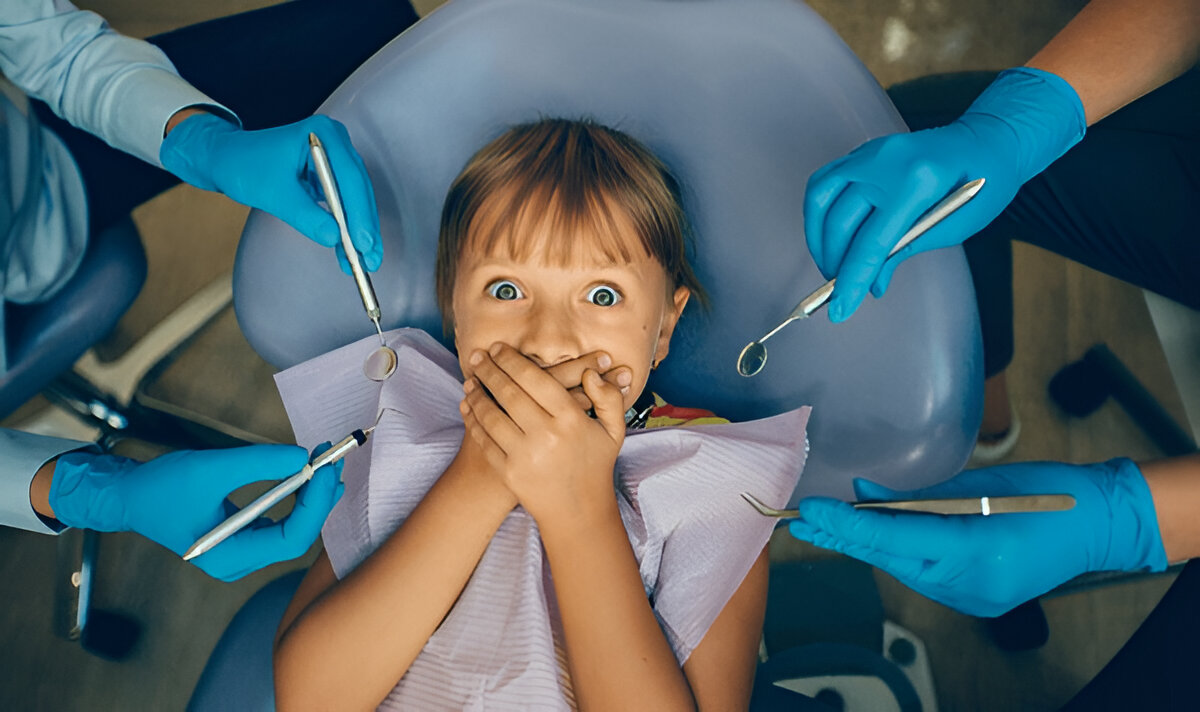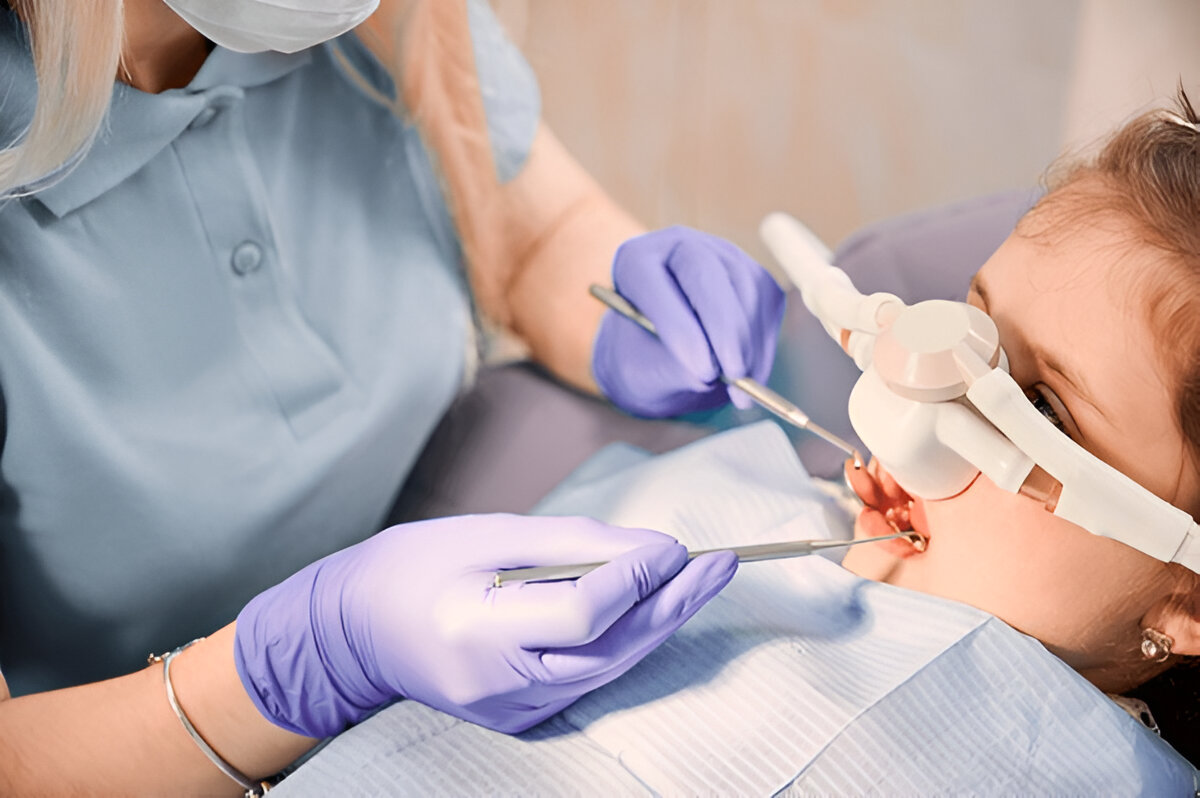Are you wondering, “Can Invisalign close gaps?” Look no further! In this comprehensive guide, we delve into the possibilities of using Invisalign to address gaps between teeth. Invisalign has revolutionized orthodontic treatment, offering a discreet and convenient alternative to traditional braces. We’ll explore how Invisalign works, its effectiveness in closing gaps, and what you can expect from the treatment process. Whether you’re considering Invisalign for your smile transformation or simply curious about its capabilities, join us as we uncover the answers to your questions about Can Invisalign close gaps?
Invisalign Treatment
Invisalign treatment involves the use of clear aligners to gradually shift teeth into their desired positions. These aligners are custom-made to fit snugly over the patient’s teeth and are virtually invisible when worn. Patients receive a series of aligners, each slightly different from the last, which they wear for about two weeks before progressing to the next set. This process continues until the teeth have moved to their final positions, as determined by the treatment plan created by the orthodontist.
Understanding Invisalign
Invisalign has transformed orthodontic treatment by offering a discreet and convenient alternative to traditional braces. This innovative approach utilizes a series of clear, custom-made aligner trays to gradually shift teeth into their desired positions.
How Invisalign Works
Invisalign works by applying gentle and controlled forces to the teeth, guiding them into proper alignment over time. Each set of aligners is designed to target specific tooth movements based on a personalized treatment plan created by the orthodontist. As the patient progresses through the series of aligners, their teeth gradually move closer to the desired final position. The aligners are typically worn for about 20 to 22 hours a day, with only brief removal for eating, drinking, brushing, and flossing.
Aligner Trays and Their Role in Shifting Teeth
The aligner trays used in Invisalign treatment are custom-made to fit snugly over the patient’s teeth. These trays are made from a clear, smooth plastic material that is virtually invisible when worn, making them a discreet option for orthodontic treatment. Each set of aligners is slightly different from the previous one, with incremental adjustments to continue the progression of tooth movement. The aligner trays exert gentle pressure on the teeth, encouraging them to gradually shift into the desired alignment.
The success of Invisalign treatment relies on the precise design of the aligner trays and the patient’s compliance with wearing them as instructed. Regular check-ups with the orthodontist are necessary to monitor progress and make any necessary adjustments to the treatment plan. Overall, Invisalign offers patients a comfortable, convenient, and effective way to achieve a straighter and healthier smile without the need for traditional braces.

Can Invisalign Close Gaps?
Invisalign, a popular orthodontic treatment, is often sought after for its ability to correct a wide range of dental issues, including closing gaps between teeth. Gaps, also known as diastemas, can occur for various reasons, such as natural tooth size discrepancies, missing teeth, or improper tooth alignment. Invisalign offers a discreet and convenient solution for addressing these gaps without the need for traditional metal braces.
Effectiveness of Invisalign for Closing Gaps
Invisalign is an effective option for closing gaps between teeth, known as diastemas. The clear aligner system can address various types of gaps, including small to moderate spaces between teeth. In many cases, Invisalign can successfully close these gaps and achieve a straighter smile. The effectiveness of Invisalign for closing gaps depends on several factors, including the size and location of the gaps, the overall alignment of the teeth, and the patient’s commitment to wearing the aligners as directed. Invisalign works by gradually shifting the teeth into their desired positions using custom-made aligner trays. These trays apply controlled forces to the teeth, encouraging them to move closer together over time.
Factors Influencing the Success of Gap Closure
Several factors can influence the success of gap closure with Invisalign. One important factor is the size of the gaps between the teeth. Invisalign is most effective for closing small to moderate gaps, while larger spaces may require alternative treatment options such as traditional braces or dental bonding.
The location of the gaps can impact the treatment outcome. Gaps that are located in areas with limited space or that involve complex tooth movements may be more challenging to close gaps with Invisalign. In such cases, the orthodontist will assess the feasibility of using Invisalign and may recommend alternative treatments if necessary. Another crucial factor is the patient’s compliance with wearing the aligners as instructed. For Invisalign treatment to be successful, patients must wear their aligners for at least 20 to 22 hours per day, removing them only for eating, drinking, brushing, and flossing. Consistent wear of the aligners is essential to achieve the desired tooth movements and close gaps effectively.
Assessment and Planning
Before beginning Invisalign treatment to close gaps, a thorough assessment and planning phase is essential to ensure the success of the procedure. This stage involves several key steps to evaluate the patient’s dental health, determine the feasibility of treatment, and create a customized plan for closing the gaps effectively.
Initial Consultation
The initial consultation serves as the foundation of the assessment and planning process. During this appointment, the orthodontist or dentist will discuss the patient’s goals, concerns, and expectations regarding closing the dental gaps with Invisalign. It’s an opportunity for the patient to ask questions, express any apprehensions, and gain a clear understanding of what to expect throughout the treatment process.
Evaluation of the Gap Size and Tooth Alignment
One of the primary objectives during the assessment phase is to evaluate the size of the gaps between the teeth and assess the overall alignment of the teeth. This evaluation helps the orthodontist determine the complexity of the case and develop a treatment plan tailored to the patient’s specific needs. For smaller gaps, Invisalign may be highly effective in achieving the desired results. However, larger gaps or more complex cases may require additional treatment modalities or a combination of orthodontic techniques to achieve optimal outcomes. The orthodontist will carefully examine the teeth and surrounding structures using various diagnostic tools, such as digital X-rays, intraoral scans, and photographs. These assessments provide valuable insights into the current state of the patient’s oral health and aid in identifying any underlying issues that may impact the success of Invisalign treatment.
Customized Treatment Plan
Invisalign treatment begins with the creation of a customized treatment plan tailored to each patient’s unique dental needs and goals. This comprehensive plan serves as a roadmap for the entire treatment process, outlining the steps necessary to achieve the desired results effectively and efficiently.
Development of a Personalized Treatment Plan
The development of a personalized treatment plan is a collaborative process between the patient and their Invisalign provider. During the initial consultation, the orthodontist or dentist will conduct a thorough assessment of the patient’s dental health, including an examination of their teeth, gums, and bite alignment. Based on this evaluation, the provider will discuss the specific concerns and goals the patient hopes to address with Invisalign treatment. Using advanced digital technology, such as virtual 3D modeling software, the provider will create a detailed plan that outlines the proposed treatment course. This plan includes precise specifications for tooth movements and aligner adjustments throughout the treatment duration. By leveraging virtual modeling, the provider can visualize the anticipated outcome of the treatment and make any necessary adjustments to ensure optimal results.
The personalized treatment plan takes into account various factors, such as the severity of the dental issues, the desired outcome, and the patient’s lifestyle and preferences. Each step of the treatment process is carefully mapped out to maximize efficiency and minimize discomfort, providing patients with a clear understanding of what to expect at every stage.
Use of Virtual 3D Modeling
Virtual 3D modeling plays a crucial role in the development of a customized treatment plan for Invisalign patients. This advanced technology allows providers to create digital representations of the patient’s teeth and jaw structure, enabling them to simulate the planned tooth movements and predict the final outcome of the treatment. Using specialized software, the provider can manipulate the digital models to precisely position the teeth and design the sequence of aligner trays needed to achieve the desired results. This virtual planning process allows for greater precision and accuracy in treatment planning, ensuring that each aligner is designed to apply the right amount of force to gradually move the teeth into their ideal positions.
By leveraging virtual 3D modeling, providers can also show patients a visual representation of the anticipated treatment outcome, allowing them to see how their smile will transform over time. This interactive approach enhances patient engagement and confidence in the treatment process, empowering them to make informed decisions about their oral health and well-being.

Progress Monitoring
Regular monitoring of progress is essential throughout the Invisalign treatment journey to ensure that the desired results are achieved effectively and efficiently. This phase involves closely tracking the patient’s progress and making any necessary adjustments to the treatment plan to address any emerging concerns or challenges.
Regular Appointments
During Invisalign treatment, patients are typically scheduled for regular appointments with their orthodontist or dentist to monitor their progress and make any necessary adjustments to their treatment plan. These appointments are essential for tracking the movement of the teeth and ensuring that the aligners are effectively shifting the teeth into their desired positions. At each appointment, the provider will examine the patient’s teeth and review their treatment progress based on the original treatment plan. They will assess how well the aligners are fitting and whether any modifications need to be made to ensure optimal results. The provider will address any questions or concerns the patient may have and provide guidance on proper aligner wear and care.
Regular appointments also provide an opportunity for the provider to assess the patient’s oral health and address any issues that may arise during treatment, such as tooth sensitivity or discomfort. By closely monitoring the patient’s progress, the provider can identify any potential issues early on and take proactive steps to address them, ensuring that the treatment stays on track.
Adjustments to the Treatment Plan
Throughout the course of Invisalign treatment, adjustments to the treatment plan may be necessary to address changes in the patient’s dental alignment or to optimize the treatment outcome. These adjustments are typically made based on the provider’s assessment of the patient’s progress and any feedback or concerns expressed by the patient. If the provider determines that modifications are needed to the treatment plan, they will work closely with the patient to make the necessary adjustments. This may involve changing the sequence of aligners, adjusting the timing of aligner changes, or incorporating additional treatments or procedures to achieve the desired results.
By regularly monitoring progress and making adjustments as needed, the provider can ensure that the Invisalign treatment is progressing smoothly and that the patient is ultimately satisfied with the outcome. This collaborative approach between the provider and the patient helps to maximize the effectiveness of Invisalign treatment and achieve optimal results.
Conclusion
Invisalign offers a convenient, comfortable, and effective solution for close gaps between teeth. Through its innovative technology and personalized treatment plans, Invisalign can address a wide range of orthodontic concerns, including gap closure, with minimal disruption to daily life. By undergoing a thorough assessment and planning process, patients can ensure that their treatment is customized to their unique needs and goals. Regular progress monitoring and adjustments to the treatment plan help to ensure that the desired results are achieved efficiently and effectively. With proper care and adherence to the treatment protocol, patients can enjoy a straighter, more aligned smile and improved oral health.
FAQs
Can Invisalign effectively close gaps between teeth?
Yes, Invisalign is an effective treatment option for close gaps between teeth, provided that the gaps are within the range that can be addressed with orthodontic treatment.
How long does it take to see results with Invisalign for gap closure?
The timeframe for close gaps with Invisalign varies depending on the severity of the gaps and the individual’s response to treatment. In many cases, noticeable improvements can be seen within a few months of starting treatment.
Are there any dietary restrictions with Invisalign for close gaps?
While there are no specific dietary restrictions with Invisalign, patients should avoid consuming food or drinks while wearing the aligners to prevent staining or damage. Sticky or hard foods should be avoided to prevent damage to the aligners and ensure optimal treatment outcomes.












